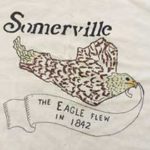
Eagle Feathers #194 – Athenaeum
By Bob (Monty) Doherty
Since 1814, Central Hill has been the location of the City Hall, three churches, four schools, a firehouse, the city’s first public park, and four libraries. From early on, many residents agreed that the public library was the focal point of the intellect of the community. Through the years, Somerville has created two main public libraries and over a half dozen satellites that catered to the needs and wishes of her citizens. This is true even in today’s computerized, super-speed networking world.
A who’s who of residents, friends and originators of libraries has touched Somerville.
- In 1638, Harvard University started its first library, the oldest in the nation. It began with a four hundred-book collection that was given by its namesake, John Harvard. At the same time, Governor John Winthrop of Ten Hills also donated a forty–volume collection of select books.
- In Philadelphia, Benjamin Franklin established the nation’s first lending library. He was the only non-congressional signer of our Constitution, the country’s most cherished document. Born in Boston, Franklin invented the lightning rod. One adorns the top of our Powder House. He was General Washington’s Flag Committee leader who designed and delivered the first American Grand Union Flag to fly on Prospect Hill on January 1, 1776.
*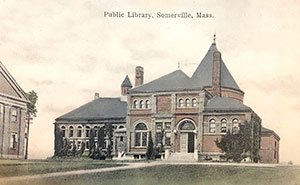 *
*
- Winter Hill’s statesman, Edward Everett, helped establish the Boston Public Library in 1848 and was the first Chairman of its Board of Trustees. To help start its collection, he gathered, bound and gifted, at his own expense, the complete records of the Congress and Senate.
- In 1871, Russell Conwell, the first Editor of the Somerville Journal and the founder of Temple University was on Somerville’s Free Library Establishment Committee. Conwell Avenue, Conwell Street, and the former Conwell School were named after him and his son Leon, a former Mayor of Somerville.
*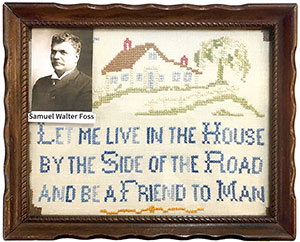 *
*
- Sam Walter Foss, a nationally known poet, was Somerville’s librarian from 1898 to 1911. During that time, he built a book circulation, which was second in New England, only to the Boston Public Library. Foss Park was named after his son, Saxton, a writer for the Boston Globe who was killed in World War I.
*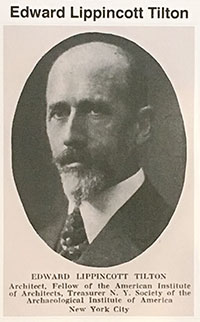 *
*
- Somerville’s Central Library was designed by “E.T.,” not the extraterrestrial, but architect Edward Lippincott Tilton. This Somerville design is a mirror image of the two buildings flanking the Ellis Island Federal Immigrant Station in New York City. Tilton also contributed to the design of the Boston Public Library.
*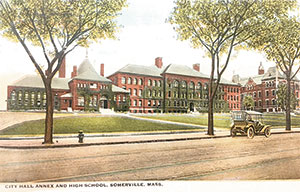 *
*
- Somerville’s Central Library and the West Library were funded by Andrew Carnegie and are listed on the National Register Historic Places.
*

 *
* *
* *
* *
*
Reader Comments